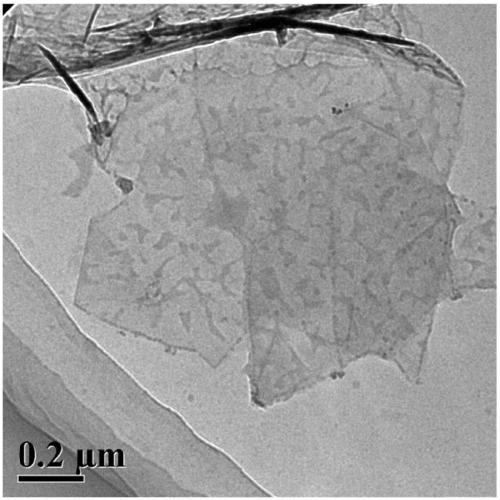Polypropylene (PP) nano composite material and preparation method thereof
A technology of nanocomposite materials and nanomaterials, applied in the field of PP nanocomposite materials and its preparation, can solve the problems of polyamide failing to enter the interlayer in time, product performance impact, etc.
- Summary
- Abstract
- Description
- Claims
- Application Information
AI Technical Summary
Problems solved by technology
Method used
Image
Examples
Embodiment 1
[0101] In this embodiment, the mass ratio of nanomaterials to polypropylene is 20:100, the liquid medium used is water, the auxiliary agent used is cetylpyridinium chloride, and the nanomaterials used are layered nano-montmorillonite. Nanocomposites were prepared as follows:
[0102] (1) Stir the liquid medium, and at the same time add nanomaterials at a speed of 5.6g / min for continuous stirring to disperse evenly, and the weight ratio of liquid medium to nanomaterials is 20:1;
[0103] (2) Add additives in batches or once to the continuous stirring solution of step (1) at a speed of 0.1g / min to obtain a paste, the consistency of which is 32mm, the additives and nanomaterials The weight ratio is 10:1;
[0104] (3) the paste obtained in step (2) is mixed with polypropylene to obtain a premix;
[0105] (4) feeding the premixed material in step (3) into a screw extruder from a pressureless feeding zone, melt blending and performing subsequent processing to obtain a nanocomposit...
Embodiment 2
[0109] In this embodiment, the mass ratio of nanomaterials to polypropylene is 10:100, the liquid medium used is acetone and water, and the mass ratio of acetone to water is 7:93, and the auxiliary agents used are polyacrylic acid and polymarine Toic anhydride, the weight ratio is 1:1, the nanomaterial that adopts is kaolin, prepares nanocomposite material according to the following method:
[0110] (1) Stir the liquid, and at the same time add nanomaterials at a speed of 10g / min for continuous stirring to disperse evenly, and the weight ratio of the liquid medium to the nanomaterials is 100:1;
[0111] (2) add auxiliary agent in the continuous stirring solution of step (1) with the speed of 0.5g / min, obtain paste, the consistency of described paste is 15mm, and the weight ratio of described auxiliary agent and nanometer material is 50:1;
[0112] (3) the paste obtained in step (2) is mixed with polypropylene to obtain a premix;
[0113] (4) feeding the premixed material in ...
Embodiment 3
[0117] In this example, the mass ratio of nanomaterials to polypropylene is 0.1:100, the liquid medium used is water, the auxiliary agent used is sodium alginate, the nanomaterials used are nano-montmorillonite and kaolin, and the mass ratio is 8 : 2, prepare nanocomposite material according to the following method:
[0118] (1) Stir the liquid medium, and at the same time add nanomaterials at a speed of 0.01g / min for continuous stirring to disperse evenly, and the weight ratio of liquid medium to nanomaterials is 50:1;
[0119] (2) Add auxiliary agent to the continuous stirring solution of step (1) at a speed of 15g / min to obtain a paste, the consistency of the paste is 26mm, and the weight ratio of the auxiliary agent to nanomaterial is 0.1 :1;
[0120] (3) the paste obtained in step (2) is mixed with polypropylene to obtain a premix;
[0121] (4) feeding the premixed material in step (3) into an internal mixer, melt blending and performing subsequent processing to obtain ...
PUM
| Property | Measurement | Unit |
|---|---|---|
| Consistency | aaaaa | aaaaa |
| Tensile strength | aaaaa | aaaaa |
| Bending strength | aaaaa | aaaaa |
Abstract
Description
Claims
Application Information
 Login to View More
Login to View More - Generate Ideas
- Intellectual Property
- Life Sciences
- Materials
- Tech Scout
- Unparalleled Data Quality
- Higher Quality Content
- 60% Fewer Hallucinations
Browse by: Latest US Patents, China's latest patents, Technical Efficacy Thesaurus, Application Domain, Technology Topic, Popular Technical Reports.
© 2025 PatSnap. All rights reserved.Legal|Privacy policy|Modern Slavery Act Transparency Statement|Sitemap|About US| Contact US: help@patsnap.com



